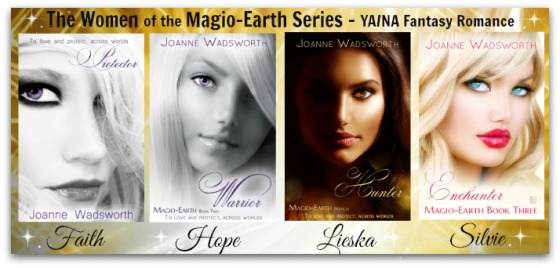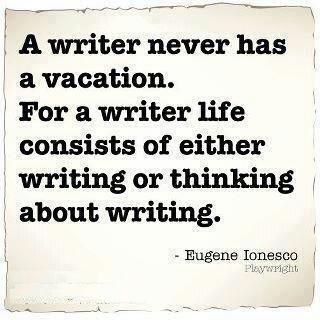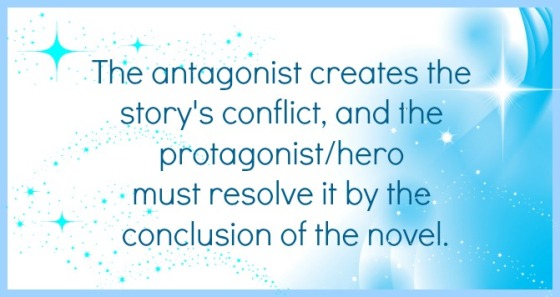by Joanne Wadsworth | Jul 1, 2014 | Author Blog

I found some young ones. So cute. 🙂
Without a doubt, YA (young adult) is a very hot genre to write. It’s been around for a while, although there was a turning point in 2008 when it truly exploded. A number of writers tried their hand at it. Some found YA was for them, and others discovered writing this genre is tougher than it looks. Although, YA isn’t about to slow down anytime soon. Readers of YA are committed. They’re always after more, and for writers of this genre, we’re here to deliver.
Now, what makes YA so popular?
Those teen years we go through, are an incredible time. They’re exciting, fun, awful, painful, scary, amazing, and everything in between. It’s when we discover the world and where we fit in. In our teen years, our emotions are pure, and all that we go through is intense and totally confusing.
That’s why YA captures such a wide-ranging readership base. It crosses the generations, and is read by young adults and adults alike. There is no age barrier to YA. Even my 90-year-old grandmother has recently read my YA fantasy romance. It was her first foray into this genre, and she was fascinated by how enthralled she became. (Phew.) The story reminded her of the time she lived by the seat-of-her-pants. (Yep, seat-of-her-pants. She was such a rebel in her younger years.) She wants more YA–and just like that, she’s hooked.
So, let’s cover what YA writers should be aware of. There are certainly some points to note.
- YA books focus on the essence of what teens go through, and I’m not talking about learning to drive a car, going to prom, or that very first date.
- YA readers are smart. They want deep storylines, and fast-paced action, so don’t even attempt to write simple. Teens will spot simple a mile away, and just get annoyed.
In fact, it’s often said writers must pay attention to the three core questions which should be at the heart of every YA novel.
A ton of new questions can arise from these three core ones, but fundamentally they make great building blocks when writing YA.
Your characters are about to take the journey in discovering the answers they seek. There’ll be struggles and mistakes, bends and twists in the road, triumphs and tears, but that’s how teens uncover all life has to offer. The journey they undertake must be deep. They must challenge themselves to sort out any inner fears and frustrations, and while doing so, remain completely relatable.
All in all, YA books are about teens coming to terms with who they are, and experiencing all life’s ups and downs along the way.
Okay, so if you’re after some YA novel guidelines, here are some helpful pointers.
- So far, there are no forbidden subjects, but whatever you delve into must be done with sensitivity and care, taking into account the age of the teen reader. Often we can allude to something, and then fade out the scene. The YA reader is smart, and they’ll be aware of what’s happened.
- Overall, teens will identify more strongly with the character’s feelings, and this is why intense situations don’t always need to be written in.
- Characters are teens, and aged within those years.
- YA novels generally run between 40,000-75,000, but you will find books either side of that. If there is a particular publisher you’re after then make sure you check out their website’s submission guidelines to see if they have a preferred word count.
- There are also no vocabulary restrictions for YA, but make certain any coarse language is age or topic appropriate.
- YA is predominantly written in 1st or 3rd Person (I said, or she said.) Although there are some in 2nd Person (you say.)
- And lastly, any subgenre is enjoyed, like fantasy, romance, paranormal, contemporary, sci-fi, historical, mystery, adventure, humor. There are no limitations on this.
I hope this post has been helpful for those writers wanting to delve into YA, or for those who just want to know a little more about this intriguing genre. Even in writing this post, I was surprised by how much I had to share. YA is certainly not easy to write, although it’s incredibly enjoyable.
But there’s more…
I’m going to share a link to the most traumatic post I’ve ever written which was featured this week on Dear Teen Me. I cried like a baby as I wrote it.
Here’s what happened. A few weeks ago, I was asked by “Dear Teen Me” to write a post, and I was thrilled to accept. Then I received the details. I was to write a letter to my teen-self, and I tell you, it was the most traumatic writing experience ever. Who wants to write a letter to their teen self? Not me, but I’d committed to it, so I jumped in with both feet and shared from my heart.
If you want to find out what made me blubber and cry, (I think I went through an entire box of tissues,) then check out the post here.
http://dearteenme.com/?p=7477
Thanks for taking a look if you did.
If you have any questions, just leave me a comment. I love hearing from you. And if you’d like to read a YA novel, then feel free to check out my YA/NA Magio-Earth series with its abundance of 4&5 Star reviews. Enjoy, and take care this week.

ENCHANTER (Magio-Earth #3): Amazon Kindle / B&N Nook / Kensington Publishing / iTunes / Kobo
HUNTER (Magio-Earth #2.5): Amazon Kindle
WARRIOR (Magio-Earth #2): Amazon Kindle / B&N Nook / Kensington Publishing / iTunes / Kobo
PROTECTOR (Magio-Earth #1): Amazon Kindle / B&N Nook / Kensington Publishing / iTunes / Kobo
by Joanne Wadsworth | Dec 9, 2013 | Author Blog

If there was ever a secret to writing, then mastering DEEP POV would be it. It certainly takes time to learn the techniques involved around getting this POV right, but I hear time and time again from editors and publishers that this is the most powerful tool in a writer’s arsenal. Study and delve into it, and ensure you have this secret weapon at the top of your toolbox. As a writer, going DEEP, means you have to go deep inside your character’s head when you tell your story. Every action, reaction, emotion and thought has to be shown as if the character was living and breathing the story, and not the author telling it.
Here are some tips and techniques to aid you in mastering your POV and going Deep.
- In order to keep things in perspective as you write, allow your POV character to guide you through their world.
- Use all the character’s senses to feel, hear, smell, see and taste things.
- Since the character is the guide, he or she can share all their emotions, reactions, thoughts, opinions, and decisions.
- This encourages showing instead of telling. Because when we tell, we’re explaining from an author’s perspective.
- We don’t want an author’s perspective when we go Deep. We want a character’s perspective.
- We need to be inside the character’s head and looking out of their eyes.
- Which means don’t allow your character to step in front of you. (This is hugely important. And I’m going to write this line again so it really sticks.)
- Don’t allow your character to step in front of you.
- No, you are not standing behind the character explaining their thoughts and actions.
- You are looking out of their eyes.
Did you all get that? Because that is the key to going Deep. You are looking out of their eyes. You are experiencing what is happening to them. Who just got goose bumps when that registered? Okay, now onward from that point.
- Now that you’re looking out of your character’s eyes, the things you notice or remark upon will drastically change. You’ll only mention things that matter to the character.
- This means your descriptions will tighten.
- For example, say your character is running for her life out of the house from a killer. She won’t bother to explain what the curtains look like, or how plush the carpet is. No. She is focused on the door, and not the exotic wood panelling, but the knob and yanking it open. Only bring to life on the page what the character is focused on. Tighten descriptions so the POV becomes more targeted.
- What happens next? You’re looking through the character’s eyes. You’re not going to describe the street and the flowers blossoming on the trees. No. She doesn’t have time to analyse those sorts of things. She’s looking for an escape path, and that’s it. For example: The black SUV parked outside the neighbor’s house. The door’s opening. It’s Jack. He’ll help her.
- Do you see where I’m heading? Tightening your descriptions and only showing what you are looking at out of your character’s eyes, will allow you to suddenly bring in her thoughts and reactions with ease. All your character’s senses come to roaring life and will enhance each and every scene. That’s what every author wants, to drag their reader right into their story.
- Which means your world of storytelling has changed, and all because you’re mastering your POV.
Fantastic, isn’t it?
So, the next time you’re having trouble with a scene and believe it’s become too flat, try this.
- Go back and see if you’re looking out of your character’s eyes.
- Check and see if you are honed into all your character’s senses.
- If you are living and breathing your character.
- That you are inside their head.
To aid you with this, if you’re interested in reading a book written entirely in Deep 3rd POV, then I’d highly recommend you grab a copy of my contemporary romantic suspense, WITNESS PURSUIT. When I was trying to master my POV, I was after books written in Deep, where I was dragged right into the story. Seeing Deep in action infuses it into our minds. There is no telling whatsoever in Witness Pursuit (eg, she watched, she heard, she noticed, she thought, etc, etc. And all the character’s senses are enhanced to the deepest degree.) The POV is tight and any character intrusion (eg, allowing my characters to step in front of me) doesn’t occur in the writing.
If you’re after a book written in Deep 1st, then I’d recommend WARRIOR for you. The same principles apply to Deep, no matter if you’re writing in 1st or 3rd. In fact apart from my debut novel, Protector, (where I was still mastering the technique,) all my books thereafter are written in Deep, so feel free to grab copies as new releases arrive. Get infused into the world of Deep storytelling. You’ll love it. The links for all my books are below should you have need of them.
Also, one last thing. I had some fun yesterday playing around with my website. I’ve created a new home page, all snazzy, or at least I hope so. If anyone has time to check it out, I’d love it. There’s even a Rafflecopter giveaway at the end, so feel free to click on that link and enter my super-duper giveaway. My website link is http://www.joannewadsworth.com. You’ll now find my blog under it’s own menu tab, although that won’t interfere with anyone receiving these posts via email. That’s all the same.
Happy Deep writing, and thanks for joining me this week.
~ Joanne Wadsworth’s Books ~
Buy WITNESS PURSUIT (Bodyguards #1) at: Amazon Kindle / Amazon Paperback / B&N Nook & Paperback / iTunes / Kobo
Buy WARRIOR (Magio-Earth #2) at: Amazon Kindle / B&N Nook / iTunes / Kobo
Buy PROTECTOR (Magio-Earth #1) at: Amazon Kindle / B&N Nook / iTunes / Kobo
Buy FIRST FROST, A Lyrical Press Anthology (including Highlander’s Captive by Joanne Wadsworth): Amazon Kindle / All Romance Ebooks
TAKE CARE. 
by Joanne Wadsworth | Sep 25, 2013 | Author Blog
I would say “random picture alert” but there is in fact a plot point here.

Yes, the dogs have not lost the plot. 🙂
For some writers plotting is a breeze, and for others they’re continuously trying to climb the mountain to discover it. I’m a pantser by nature, which means I generally fly-by-the-seat-of-my-pants and allow my story to unfold as it will. The majority of writers are, and that’s the creative side of us bursting forth. But I’ve also learnt the benefits of plotting various elements into my story. A writer has to plot in order to give their book its meat and direction.
So how do we plot when we’re a pantser?
- We keep it logical.
- Know who your main characters are. Ie, your hero, heroine and antagonist.
- I’ve mentioned the main three in particular, because of my golden rule. Here’s the graphic I created a few months ago and shared.

- Here, story conflict = plot.
- Ascertain what your main plot point is and write it down. The reason I do this, is because my characters drive their story, and with the plot written down, I can continually remind them of it and keep them on track.
- Don’t forget your subplots. They can be great and add layers to your story, only don’t create too many of them that they ruin the main plot itself. You don’t want readers having to work too hard at keeping all your characters and story lines in place.
- Remember that subplots are designed to tug the reader in, to add depth, but not to overcomplicate matters. Keep your focus on the main plot, but enjoy the rocking motion afforded by subplots to enhance your reader’s experience.
- Don’t allow any holes to develop in your plots by leaving out a missing piece of the puzzle.
- And don’t allow your characters to act unnatural or out of turn during those conflicts.
- Keep your pacing on track, ensuring your characters grow with each point of conflict (plot) you throw at them.
- Make every scene you write earn its place in being a part of your plot. If it makes no sense to have it there, drop it.
- Never forget all plot points must reach a resolution, otherwise a loose end leaves your reader in limbo and wondering what happened to that character.
I hope you found this list of “how to plot” helpful. If there’s anything you’d like to add to the list, then drop me a comment. I love hearing from you guys.
Don’t forget, if you’d like to read one of my books from my thrilling new Young Adult Fantasy Romance series then by all means, check out the book links below to pick up your copy of PROTECTOR or WARRIOR.
Here’s what one reviewer has just said about my latest release:
“Warrior held my attention from start to finish. Each obstacle Hope and Silas encountered had me jumping with joy, but often screaming in frustration. What made me fall in love with Warrior, is the heart thudding romance between the two main characters. It isn’t just a love story, it’s so much more. 5 Stars.” – Nocturne Romance Reads

Buy PROTECTOR (Book One) at: Amazon Kindle / B&N Nook / iTunes / Kobo
Buy WARRIOR (Book Two) at: Amazon Kindle / B&N Nook / iTunes / Kobo
–ooOoo–
HAVE A GREAT WEEK. CATCH YA LATER. 🙂
by Joanne Wadsworth | Sep 1, 2013 | Author Blog, Protector

Sooo true. I’m claiming this saying for myself.
When I first began the submission process on my first novel, I read over and over from agents and publishers on their websites that they wanted to see submissions reflecting a unique writer’s voice. I had no idea what that was at the time, but still thought, hey, that’s me. What’s not unique about my voice? I’m a Kiwi from Down Under. My voice is my own, and I have an extremely unique take on the world being that I’m always standing upside-down and the other-way-around. 🙂
Yeah, that’s not writer’s voice, but it wasn’t long before I truly understood what it was. I also came to realize it’s the most elusive aspect of writing, that it’s a challenge to truly grasp, yet also a challenge I could completely take on.
So, what is writer’s voice?
Writer’s voice is that wonderful combination of blending your own unique writing style with a deep understanding of your characters, along with knowing how their story best needs to be told. A writer’s voice is the most moving part of the story, and it’s sometimes referred to as the heartbeat of the main character. In other words, a writer’s voice is the magic that makes the story soar.
A strong writer’s voice brings the POV character to life, captivates the reader and has them hanging onto every word, every description, action, emotion and reaction.
A writer’s voice should be completely authentic, and most certainly not a copy of your favorite author.
A writer’s voice should also allow the reader to bond emotionally with the main character, to forge a connection that can’t be broken. This is why it’s so important for a writer to know their characters inside and out.
I’ve spoken before about understanding your characters in this way, and well before you get to the end of your first draft, otherwise there can be a ton of rewriting simply because you’ve come late to the party. A writer needs to know the heart of their main character, their essence, what makes them tick, what their strengths and ultimate fears are. You need to be intimately familiar with their entire thought process. Nothing is off-limits. And therein the magic begins.
Magic = Knowing your characters.
Magic = Constantly growing our writing skills and abilities.
Magic = Understanding, and writing your POV correctly.
That’s right, don’t forget to nail your POV within your writer’s voice. Knowing which POV would be the best in telling your story is incredibly important. 1st Person, 3rd Person, DEEP POV? Omni? The wrong POV can do your story a disservice, so study, study, study. And read widely in the genres of your stories.
I hope this post was helpful. Have you discovered and mastered your writer’s voice? Perhaps you’re still on the road to getting there. It definitely takes time and perseverance. In truth, I’m still traveling along that road. With each story I write, my writer’s voice strengthens and becomes more distinct. It’s all about the magic.
Today is also my official release date for WARRIOR. Yay! Any if you want to read a thrilling new Young Adult Fantasy series filled with intrigue at every corner, then by all means, check out the book links below to pick up your copy of PROTECTOR or WARRIOR.
Each book in my Magio-Earth series features a different hero and heroine, but the characters from the books all intertwine and you get to catch up with them all along the way. As such the books can be read independently of each other, but of course as with most series, they’re more fun when read in order. Here are those links:

Buy PROTECTOR (Book One) at: Amazon Kindle / B&N Nook / iTunes / Kobo
Buy WARRIOR (Book Two) at: Amazon Kindle / B&N Nook / iTunes / Kobo
THANKS EVERYONE FOR JOINING ME. YOU HAVE A SUPER DUPER WEEK.
by Joanne Wadsworth | Aug 12, 2013 | Author Blog

So true. 🙂
Two weeks ago I began writing my next WIP. It’s book two in my historical Highlander Heat line, and I’m reminded as my characters’ personalities build, of how important it is to understand them, to get down to the nitty-gritty and make them real.
We need to have a good grasp of who they are and what makes them tick. They must be unique, which means we need to take care not to typecast them. With this typecasting, I’m referring to giving our characters labels such as “the bad boy,” the “misfit,” or the “cheerleader.” Do you see where I’m heading?
Readers are clever, and they quickly pick up on characters who represent a common character cliché. That can bore the reader. It can also cause the reader to turn from them because the character just doesn’t feel real.
Our characters also shouldn’t be too perfect, too weak, too beautiful, or too much of any one thing. As writers we have to get inside our characters’ heads and humanize them.
A great way to do this is to interview them. Yep, that’s right. Here’s what I do. Once I’m a chapter or two into their story, at the point where I have a good grasp of each of my main characters, I write down their likes and dislikes, their strengths and weaknesses, and ultimately what drives them. Their faults and fears have usually popped up by now and become glaringly obvious. Those are key, because as they say, conflict+conflict=story.
I love their faults and fears. Those issues allow my characters to become authentic, and it’s my job to throw challenges at them which will test those weaknesses and allow them to grow. There is nothing better than having our reader become invested in our characters, for them to cheer them on as they work at resolving their issues. Just remember to keep your characters’ plight and their scenes real.
I hope you’ve enjoyed this post, and that you’ve come away with some helpful hints. I know for myself, if my story isn’t moving forward the way it should, it’s usually because I don’t have enough understanding about my characters. I love those interviews. Give it a go if you haven’t tried it before.
Don’t forget to drop me a comment if you’d like to. My post always goes live on a Monday afternoon Down Under in New Zealand, and when I wake up on a Tuesday morning the first thing I do is read all your messages. I truly love hearing from you guys. You all make my Tuesday mornings shine, so don’t be afraid to say hi.
Stay safe. I’ll catch ya later.

PROTECTOR > BUY THE BOOK: Amazon / Barnes & Noble / Lyrical Press / iTunes / Kobo







